

Matt Campbell
2026 Hyundai Tucson Hybrid review
1 Hour Ago
Peugeot's sporty-looking new flagship hatchback brings out the good and bad of French motoring in what’s quite a charming package.
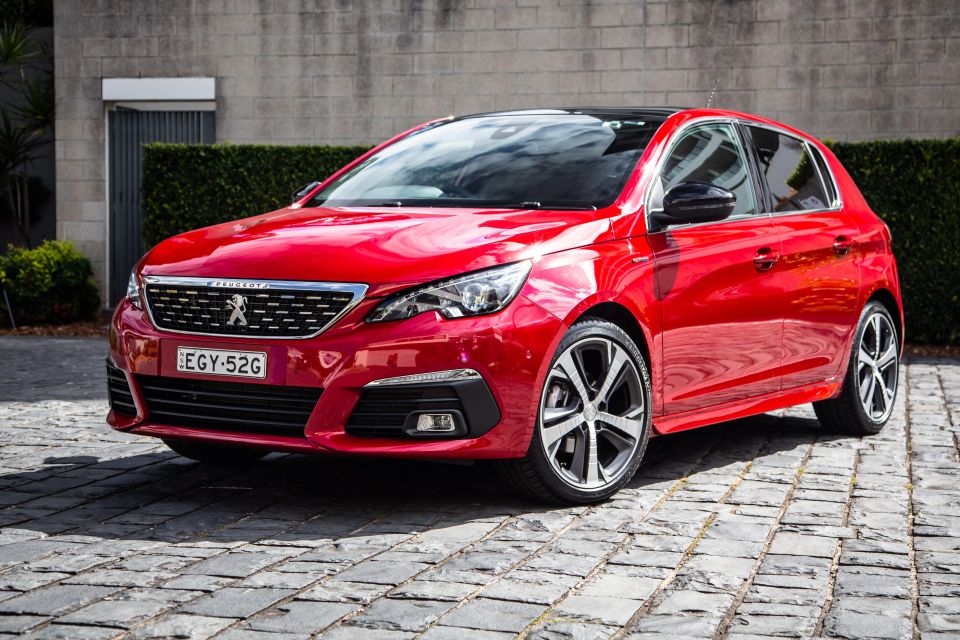
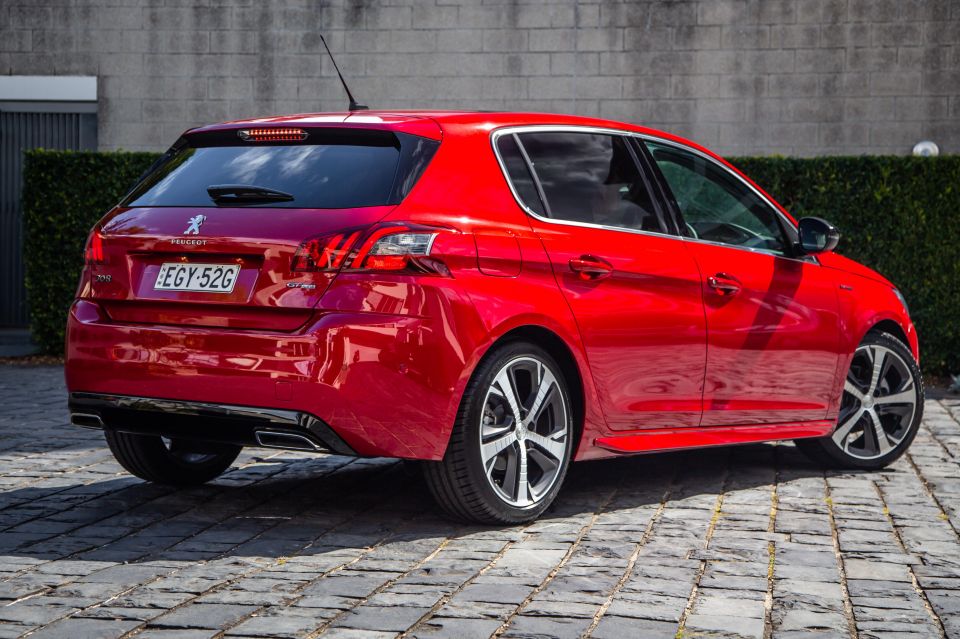

Journalist
New from
$32,990
excl. on-roads

Journalist
New from
$32,990
excl. on-roads


Journalist
New from
$32,990
excl. on-roads

Journalist
New from
$32,990
excl. on-roads
Quickly see how this car stacks up against its competition. Select any benchmark to see more details.
Where expert car reviews meet expert car buying – CarExpert gives you trusted advice, personalised service and real savings on your next new car.
It’s been a bit of a rough patch for French car fans and sympathisers of warm versions of the Peugeot 308.
The feisty 200kW GTi hot hatch is no longer making the boat trip across the big pond and the rather likeable 165kW GT is a victim of Europe’s tightening emissions regulations.
That leaves a relative newcomer to Aussie roads and showrooms in the form of the GT Line, the fittest of the three grades in Peugeot’s recently stripped-back local line-up.

It piles on all of the sporty goodness in aesthetic vibe, but makes do with a 1.2-litre turbo three-pot petrol producing 96kW of power. Be still my beating heart.
Don’t write off the charming-looking five-door quite so quickly, though.
On the surface, the 308 GT ‘Like’ – I mean, GT Line – appears to unpack a host of goodness for not unreasonable money, even if it’s been a bit tricky to keep tabs on exactly how much money this new variant actually asks for.

The GT Line was introduced to the Aussie line-up in April this year for $32,990, but by the time Q3 rolled around it’d jumped to $34,990before on-road costs.
For its range-topping positioning and features set, the 308 GT Line looks anywhere between competitive to fairly damn enticing depending on what you can get one for on-road.
On list pricing alone, it faces off against the likes of Toyota Corolla ZR petrol or hybrid ($32,695/$34,695), Mazda 3 GT ($34,090), Volkswagen Golf 110TSI Highline ($34,990) and, closer to home, the Renault Megane GT-Line ($32,990).
If your preference is transport over sheer comfort and niceties, your cross-shopping will undoubtedly lean more towards competition from the Hyundai i30 N Line and N Line Premium ($27,010/$35,590) or the Kia Cerato GT ($33,490). Add the Focus, Civic, and Impreza – fully loaded at under $32,000 list – alternatives and the Peugeot has some very stiff competition for your hard-earned dollar.
The 308 GT Line is automatic only. Of the six available colours, there are three extra-cost metallics ($690) and two pearlescent finishes ($1050) such as our Ultimate Red test car.
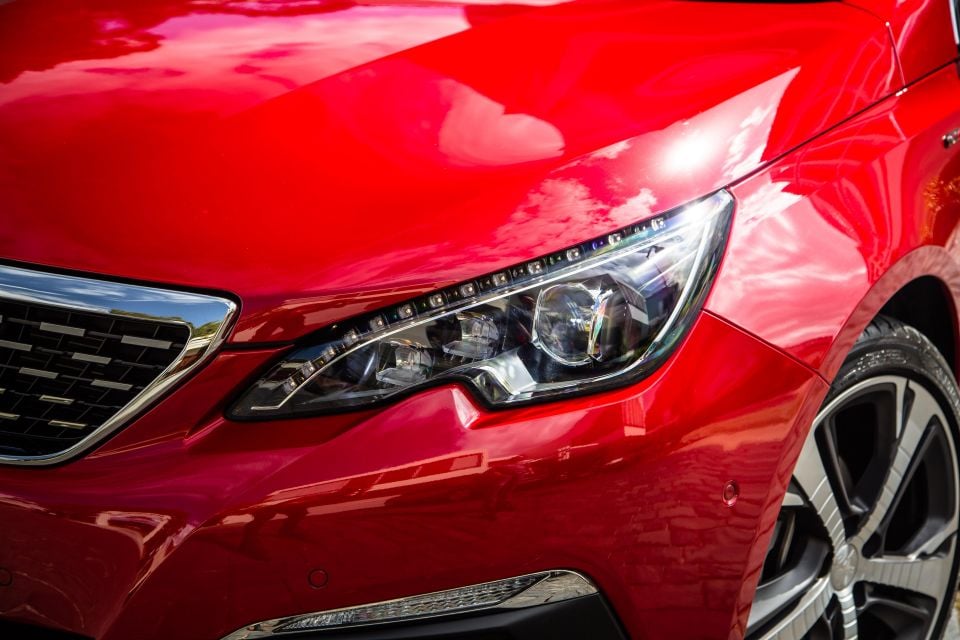
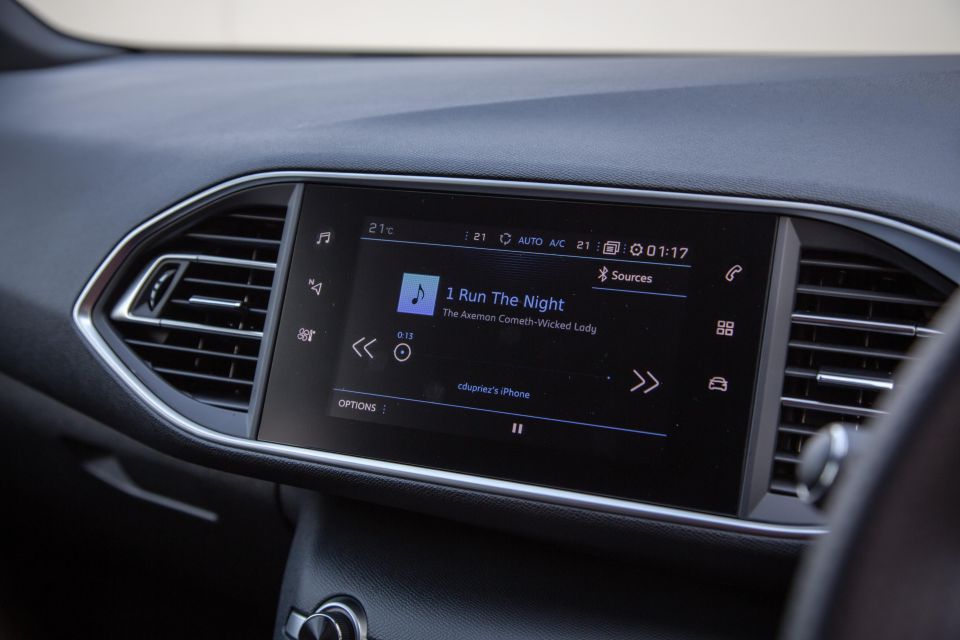
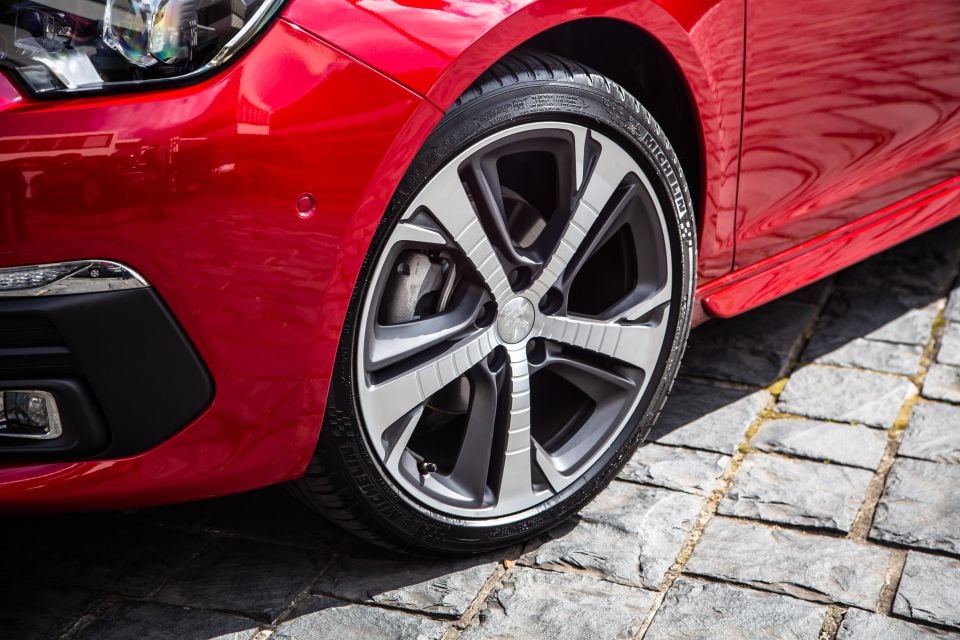
Buy your new car without the stress. It's fast, simple and completely free.

Great service from Travis and team, second time I have used this business would not hesitate to recommend them to anyone
Craig C.
Purchased a Ford Ranger in Sunshine Coast, QLD
CarExpert helped Craig save thousands on his Ford Ranger, now let us save you on your next new car.
Find a dealInterior gear includes a leather-trimmed wheel, dual-zone climate control, an auto-dimming rear-view mirror, a reversing camera, LED overhead lighting, and a 9.2-inch touchscreen infotainment with sat-nav, DAB+ and Apple and Android smartphone mirroring.
Seating is manually adjustable and a space saver spare wheel is standard. GT Line also gets regular cruise control and City Park automated steering assistance when parking.
Outside, this variant wears 18-inch alloys with 225mm Michelin Pilot Sport 3 rubber, sports body styling, full LED lighting with auto headlight levelling and scrolling indicators, rain-sensing wipers, dusk-sensing headlights, one-touch electric windows, power-folding mirrors, front and rear sensors, and the aforementioned glass roof.
In short, it’s a decent fit-out that misses a few tricks here and there. Design apart, the GT Line doesn’t really bring many new or different in features to the small-car segment.

The T9-generation 308 has been around globally since 2013. Though it has a five-star ANCAP rating, it was awarded way back in (pre-AEB assessment) 2014, based off a Euro NCAP rating, and only applies to diesel versions.
For the record, the left-hook Euro diesel scored 14.82 out of 16 for frontal offset, 16 out of 16 for side impact, 2 out of 2 for the pole test, with whiplash and pedestrian assessments of good and acceptable respectively for an overall score of 35.82 out of 37.
Back to the future, today’s 2020 local spec has camera-based AEB with collision warning, blind-spot monitoring, lane-departure warning, lane-keeping assistance, driver alert, speed sign recognition, and hazard light engagement during hard braking.
Front, side, and curtain airbags, and rear outboard ISOFIX mounts are standard issue.

Peugeot’s so-called i-Cockpit. Some might like it. Some will find it a deal-breaker.
For all the exterior design orthodoxy, the cabin’s utterly quirky dash and driver interface is easily 308’s most left-field feature and biggest talking point. Locating the instrumentation above the steering wheel might’ve been an attractive point of difference had it not been so poorly designed.
Unless you’re particularly tall, the steering wheel rim mostly or completely obscures all key instrumental information. That is, unless you drop the wheel height into your lap, which no right-minded driver should.

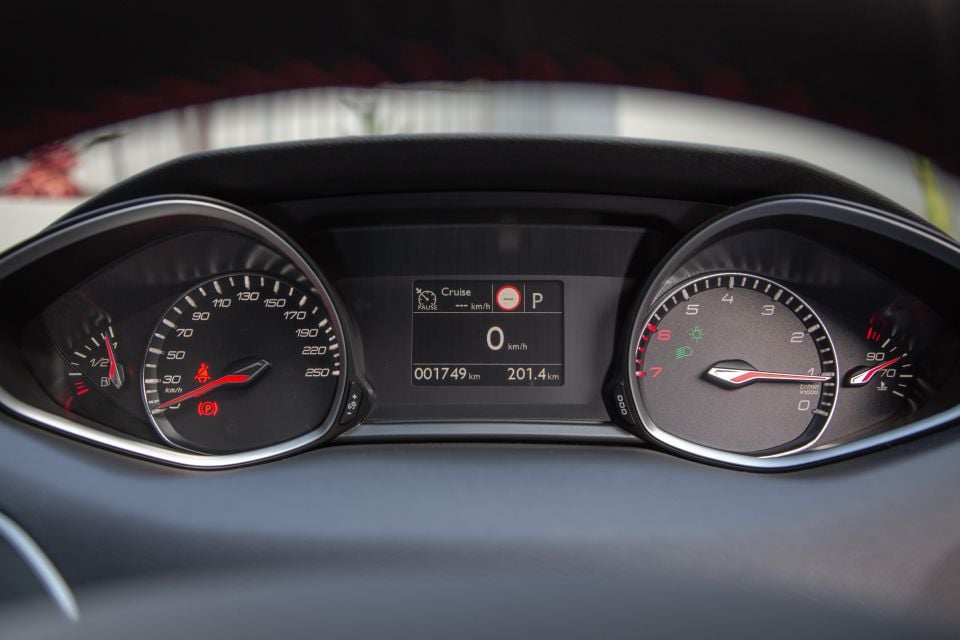
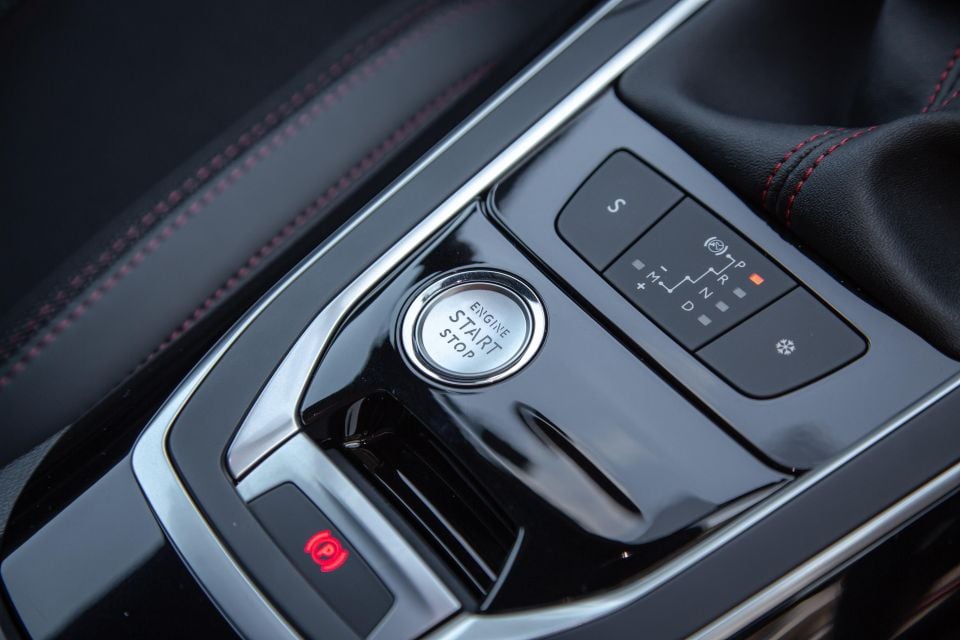
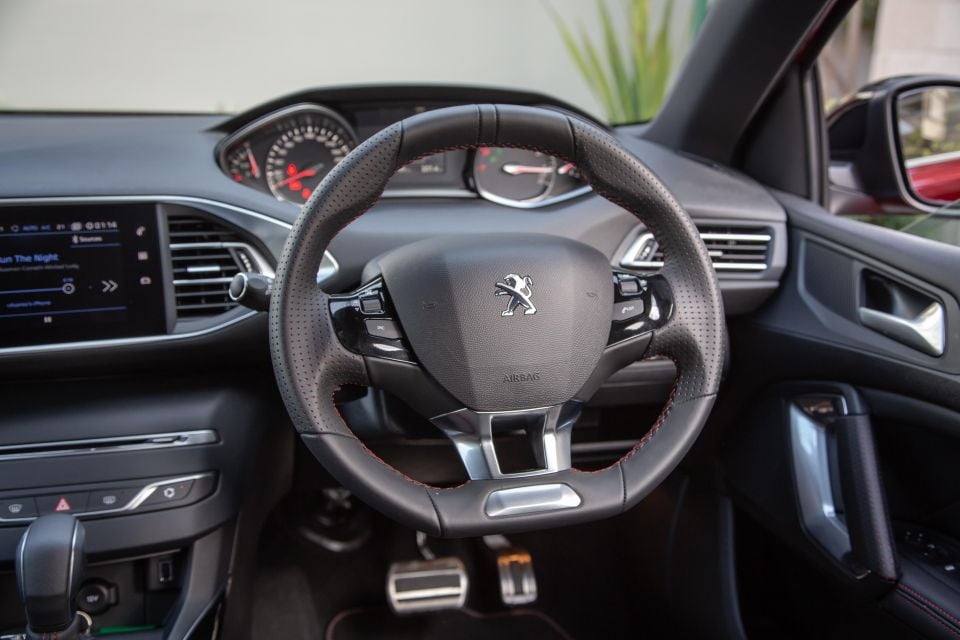
Those responsible seemed to have tried to ‘fix’ visibility issue by fitting an overly small steering wheel that is egg-shaped, so it looks as weird as it feels. Somehow someone signed off on all of this…
It’s otherwise a pleasingly minimalist dash fascia styling for a cabin with a distinctive vibe despite its mostly conventional design. Materials, switchgear and solidity are generally quite good and it feels like a genuinely upmarket Euro in ways some Asian rivals try and fail to achieve at this price point.
But unlike so many of its international competition, the otherwise gracefully aging 308 isn’t terribly clever or all that well packaged. The single USB port and lack of rear air vents is a bit lazy if hardly exclusive to this model in its segment, but why is there only one cupholder up front – and why is it obscured by console trim? And there’s a reluctance to offer much oddment storage outside of the door bins and a tray only large enough for the smart key.


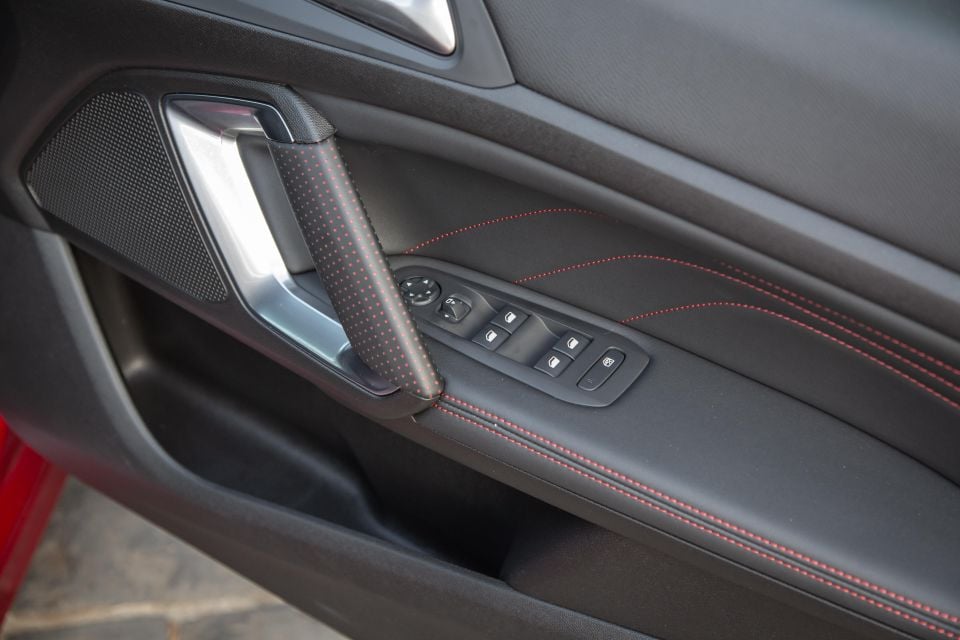
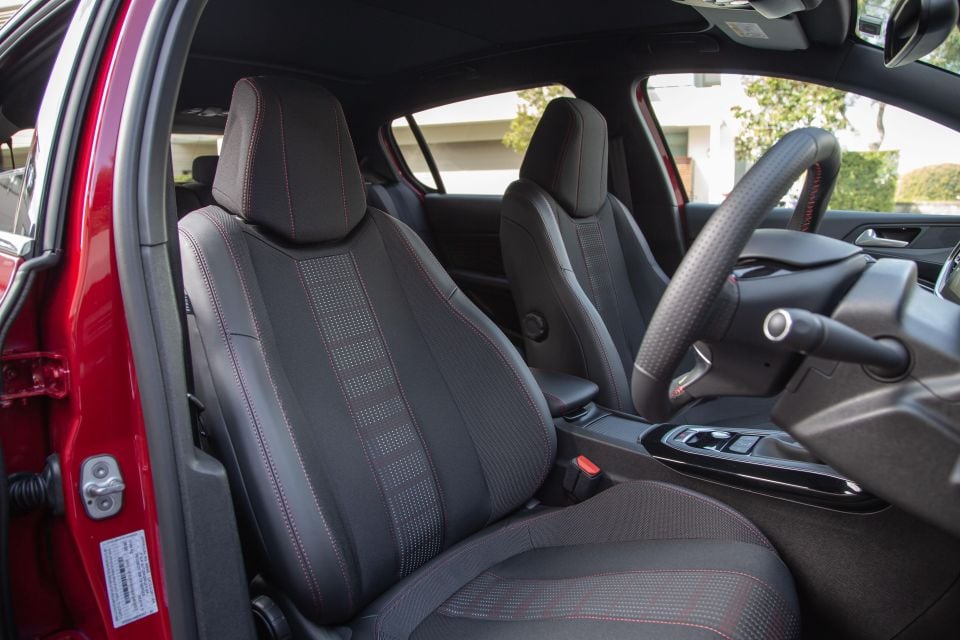
The manual front seats are initially fairly comfy, though the stiff padding has lumps in odd areas of the seatback with no facility for adjustment. The cloth trim, though, looks great and is quite decent in quality and feel.
The infotainment system betrays the fact the 308 was born in a time when loading the climate controls into an on-screen sub-menu was considered a good idea – motoring has since moved on with the wisdom of hindsight. You get a cleaner fascia but it takes twice as long as it should to make air-con adjustments.
The rear accommodation is much tighter than you might otherwise expect for a hatch this size and a glance across the second row reveals the rear bench is, unlike many rivals, set quite far forward.
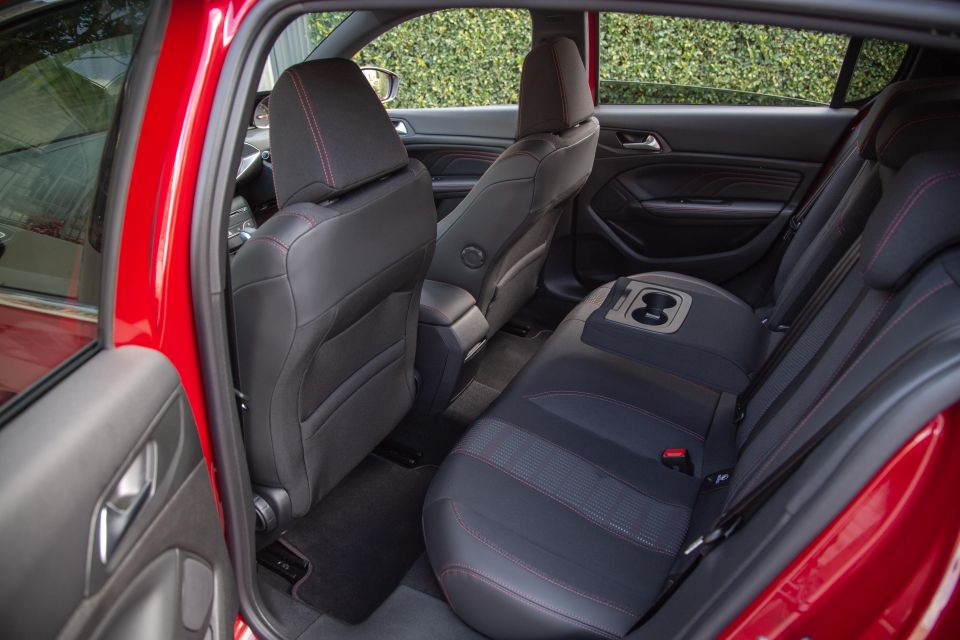
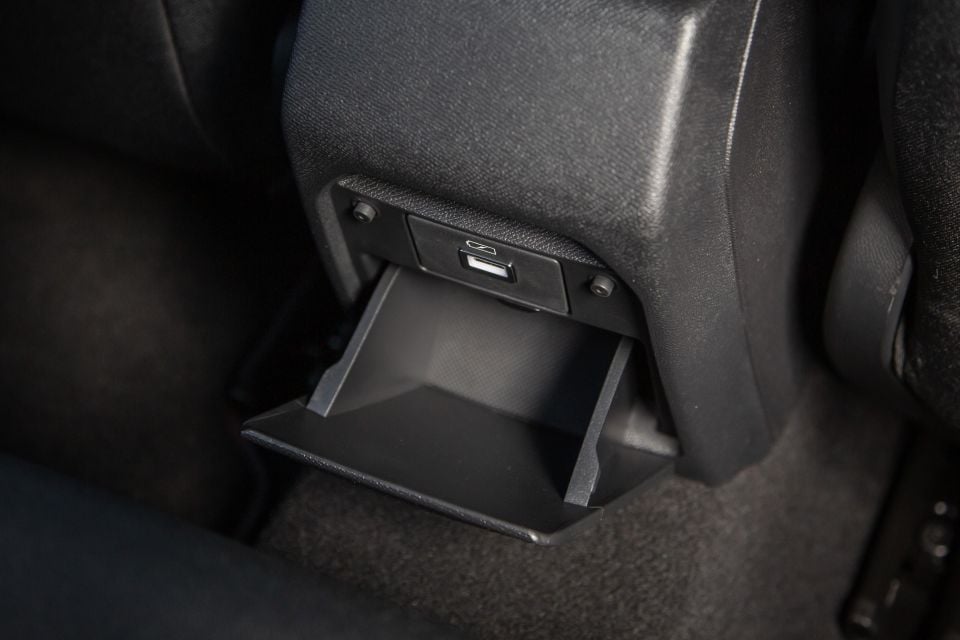
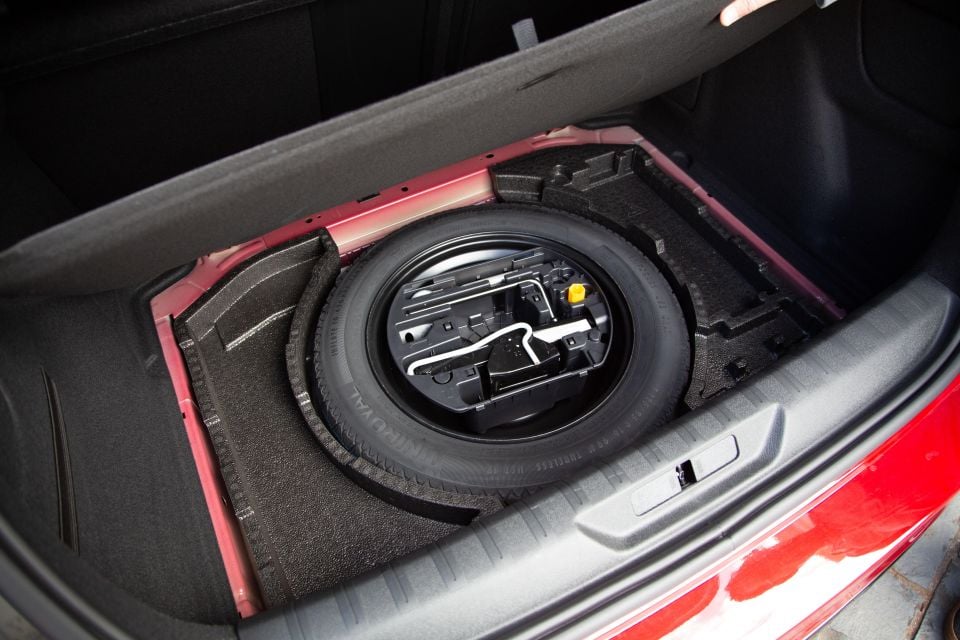
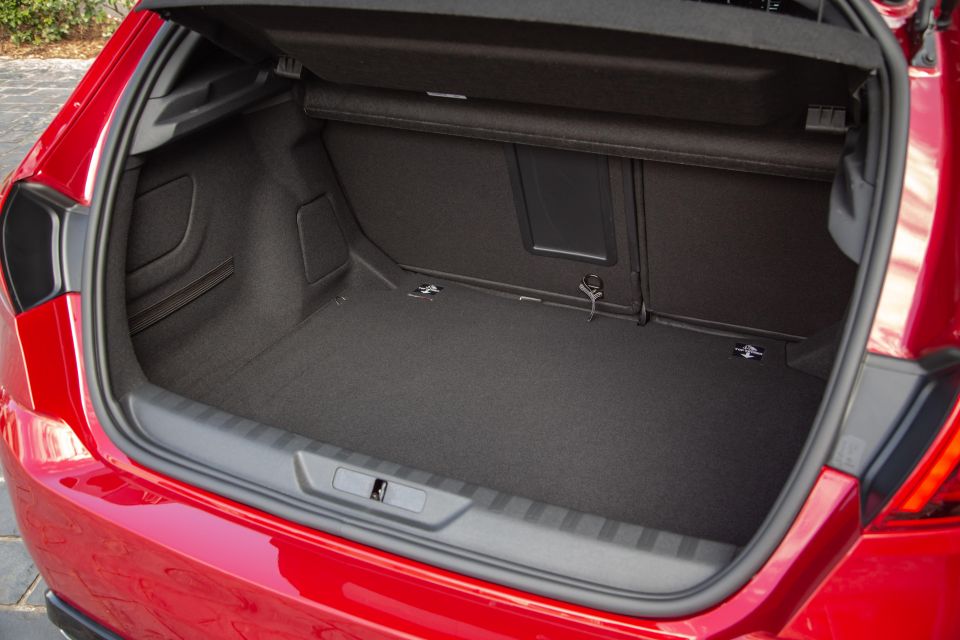
In balancing second-row occupancy and sheer boot space, the latter seems to have confidently received priority. Again, no air vents or device power, though Peugeot did decide to fit a 12V outlet behind the left-side passenger’s shoulder in the parcel shelf trim which is, well, a little odd.
It’s a big boot, its fulsome 435 litres converting into 1274L with the 60:40 split-fold seat backs stowed to what’s a reasonably level load space.
I expect when a new-generation 308 finally arrives, it’ll be much more cleverly and economically packaged for interior space than this current version. Expectations for proper four-adult conveyance have moved on quite a bit since this five-door left the drawing board quite some time ago.
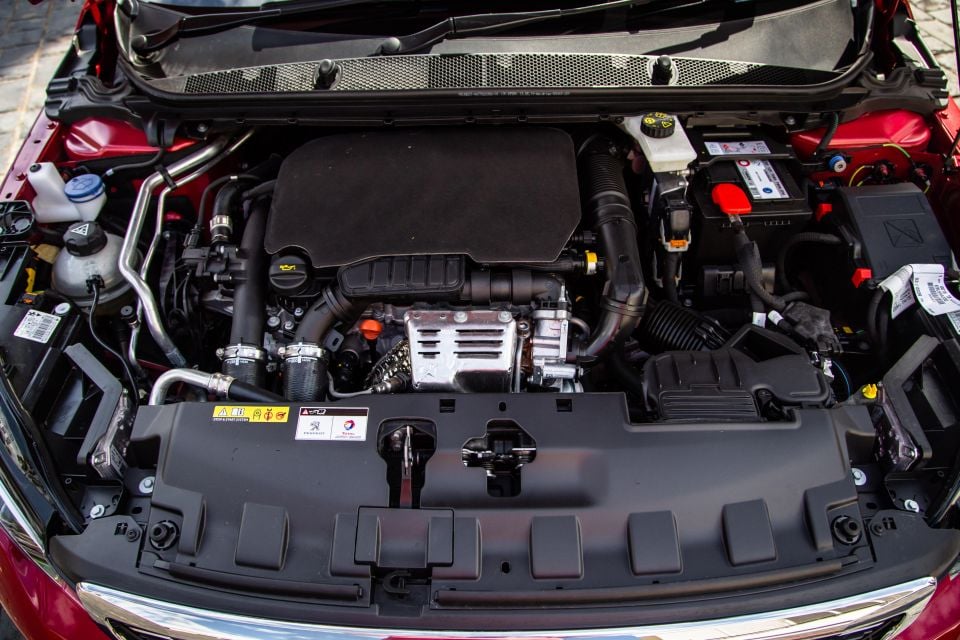
The only engine available for 308 in Australia right now is the 1.2-litre turbocharged three-cylinder petrol engine producing 96kW of power at 5500rpm and a fairly robust 230Nm of torque (for its capacity) at 1750rpm. Sadly, the GT branding doesn’t bring with it any added ‘gran turismo’ urgency over the entry Allure version.
It drives the front wheels through an Aisin-sourced six-speed torque-converter automatic.
The combined consumption claim is 5.0L/100km, its frugality no doubt aided by the 308’s lightweight 1122kg tare mass. We saw closer to sevens during our mixed driving assessment though. With consumption dropping into the fours on the highway and a 53-litre tank its theoretically long-haul range is easily over 1000km.
Driven around town it tends to settle into 8.0L territory, proof perhaps that the little 1.2L engine works harder for its keep that it lets on. Unsurprisingly, it needs 95RON to remain happy.
At 11 seconds from a standstill to 100km/h, it’s hardly what you call a pocket rocketship. Give it a long enough leash and the French hatch will wind out to a 200km/h v-max.
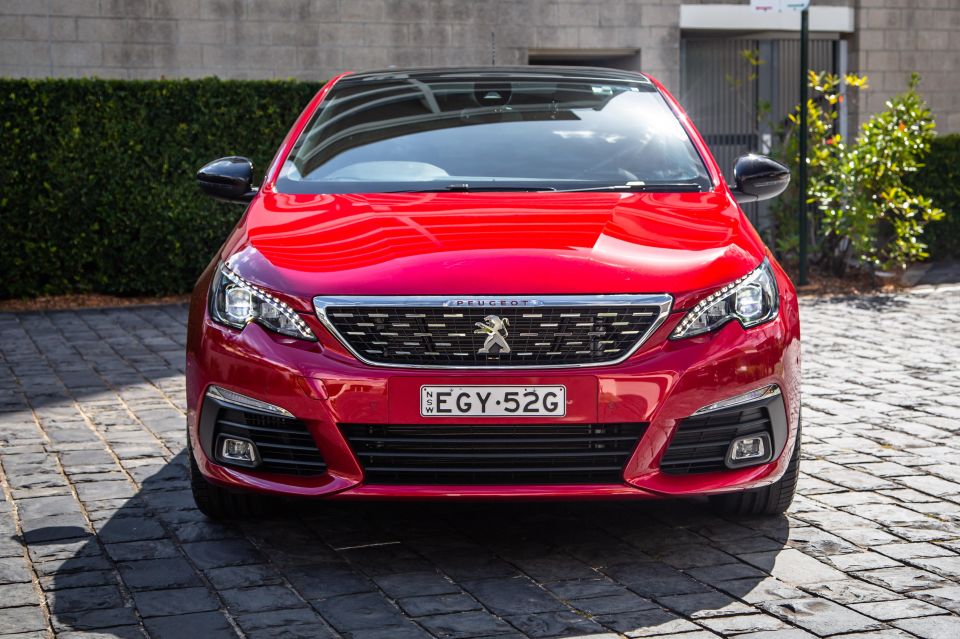
The 308 GT Line makes up for its interior shortcomings and weirdness with an accomplished and quite enjoyable on-road character. It’s well-rounded and foible-free in behaviour and has quite a sporty, well-sorted and polished vibe.
Surprisingly, the engine packs a decent wallop, so much so that it easily dispels most misgivings you might about its tiny capacity outside of an almost diesel-like rasp under decent load. It’s really the torque – fulsome, immediate and right in lower rpm depths where you need it around town – that almost entirely compensates for a patent lack of horsepower.
It’s a fine pairing with the conventional auto, which is a clean and intuitive shifter with none of the annoyances of the CVT or dual-clutch designs offered by rivals. It only has six forward ratios but doesn’t suffer negatively for it. And its calibration is so attuned to riding the satisfying torque hump it helps make the engine feel larger than it actually is.
Kick down on a roll is pretty decent, there are enough herbs on board not to get left short trying to overtake, and it settles in quietly with the cruise control dialled up on the highway. It isolates road and environmental noise well, and there’s no pronounced roar from those 225mm Michelins that really shine once you hook the 308 into a corner.
I quite like the steering. It’s focused, flab-free and lively just off centre yet evenly measured in ratio and not overly sharp. And because the 308 is quite lightweight and doesn’t have much mass over its front wheels it tracks cleanly and obediently, exactly where it’s pointed.
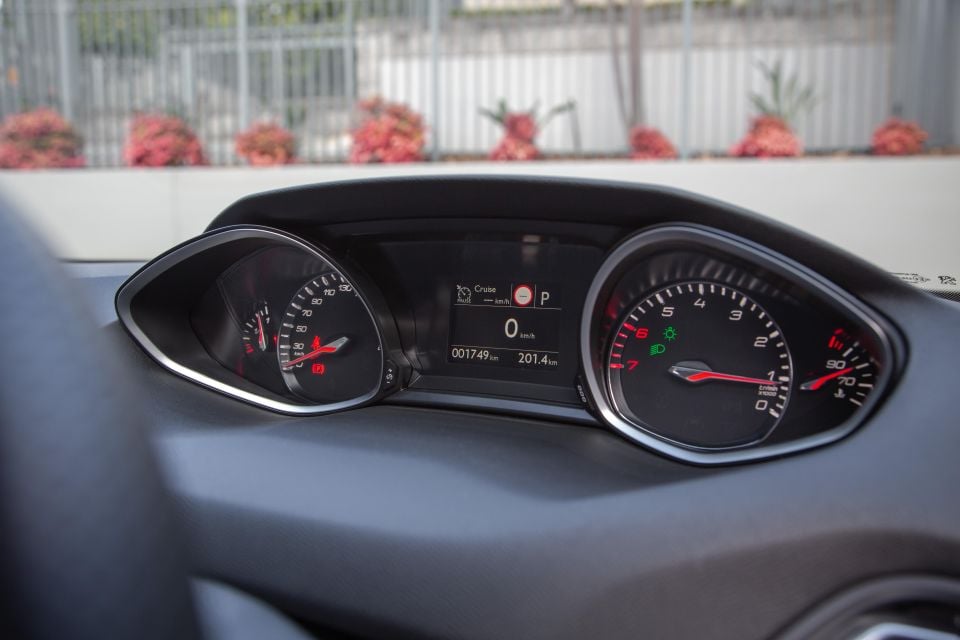
Great chassis tune, too. It’s almost hot hatch firm as a default yet the quality damping isolates mostly of the jiggly sensation you otherwise find in focused chassis, and the compliance once the suspension gets moving properly is well executed.
Push on and it rewards with tremendous grip and lovely balance. It mightn’t rank as a warm hatch on outputs but it certainly embraces such a character in dynamics where, frankly, sportiness matters the most.
It’s fairly easy to judge and to park, with an impressively concise turning circle (10.7m). The reversing camera is adequate but it features one of those strange overhead camera views that blacks out much of the surrounding real estate, where and when you need it usually, because it’s fed imagery from the rear camera only.
It’s not an uncommon system in today’s motoring – it was also fitted to a Citroen I reviewed recently – and it’s more gimmick than of actual real-world benefit.
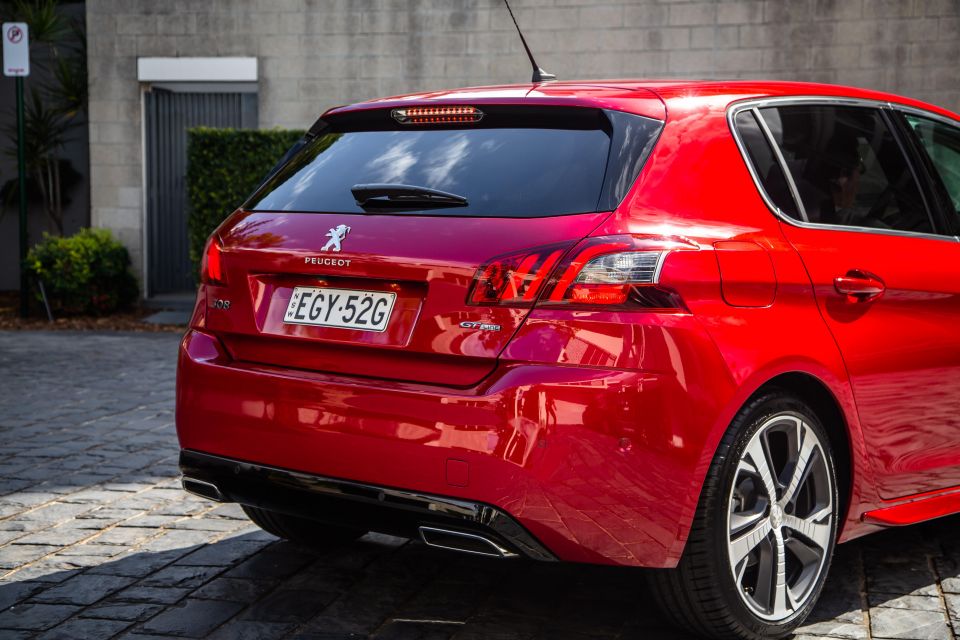
The GT Line is covered by five years of unlimited-kilometre warranty that, for its segment, is good if short of the segment benchmark of seven years.
Service intervals are a fairly standard 12 months or 15,000kms. While Peugeot’s servicing is inclusive of some consumable items not covered by other capped-priced programs, visits aren’t cheap. From $391 through to $629 per service, the 308 GT Line works out to $2504 over five years, or an average of just over $500 per year.
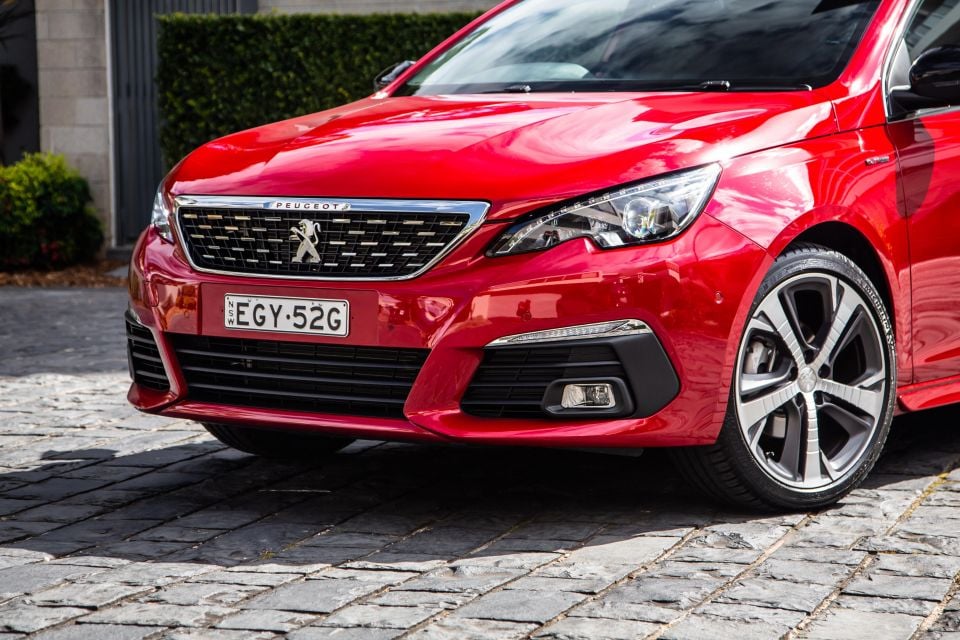
Where expert car reviews meet expert car buying – CarExpert gives you trusted advice, personalised service and real savings on your next new car.
Charm. For its many quirks and one large annoyance with its i-Cockpit dash format, the 308 GT Line packs a huge amount of the sort of charm that’s not apparent on equipment lists or in objective assessment. And yet it’s perhaps the biggest reason why it deserves a look in when shopping for a small hatchback.
It’s charming in a number of areas: in its stylish looks and exterior presence, the upmarket vibe inside despite the cabin shortcoming, in the quality of the powertrain regardless of bold-faced statistics and with its satisfyingly premium on-road demeanor.
Thing is, it wants for handsome money, it’s getting on bit, there are certainly areas where its polarizing characteristics might grate too negatively and its simply not as cleverly or slickly executed as more contemporary rivals.
Result? It’s an easy car to like if one that’s a little tougher to recommend over some of its segments leading lights.
Where expert car reviews meet expert car buying – CarExpert gives you trusted advice, personalised service and real savings on your next new car.


Matt Campbell
1 Hour Ago


Max Davies
17 Hours Ago


William Stopford
17 Hours Ago


Derek Fung
18 Hours Ago


Max Davies
1 Day Ago


William Stopford
2 Days Ago